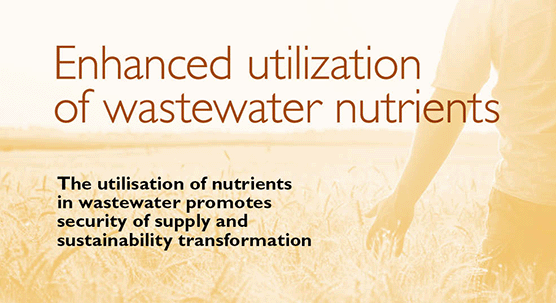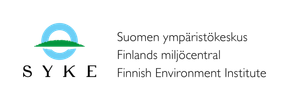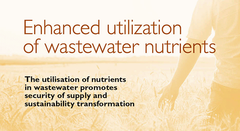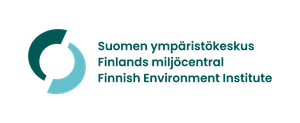SYKE Policy Brief: Enhanced utilization of wastewater nutrients

“More efficient recovery of nutrients from wastewater is a topical issue in today’s uncertain world situation, where the availability of nutrients can become increasingly difficult”, says Senior Research Scientist Suvi Lehtoranta from Finnish Environment Institute (SYKE), and continues:
“Wastewater nutrients can replace artificial fertilizers used in agriculture and nutrients used by industry. This would improve security of supply. It would also reduce dependence on fossil fuels and imports while conserving natural resources.”
According to Lehtoranta new technologies should be introduced in wastewater treatment plants and in sewage sludge processing, especially for the recovery of nitrogen, which is a critical nutrient in food production and industrial processes.
“New technologies for recovering nutrients have already been developed in Finland and abroad, and more are being developed constantly”, Lehtoranta says.
Highly processed nutrient products are most likely to end up in industrial use. “From the point of view of the security of food production, it would also be important to steer enough nutrients to agricultural use, if necessary”, Lehtoranta says.
Source separation would lead to more efficient recovery of nutrients
In the long term, bigger changes to wastewater systems are needed.
In new residential areas, and when renewing old sewage networks, source separation of wastewater should be introduced whenever possible. Source separation can be implemented with double drainage, where nutrient-rich wastewater, such as blackwater, is treated separately from other wastewaters. This prevents nutrient-rich wastewater from being diluted by nutrient-poor wastewaters with a high volume of water, from which nutrient recovery is more difficult.
Forty percent of Finland's sewer network will need renovation by 2040. “In connection with renovations, it would be important to find out whether it would be appropriate to introduce source separation of wastewater”, Suvi Lehtoranta observes.
Such solutions have been introduced in new urban residential areas in Sweden and the Netherlands, for example. “The experiences have been good, and the costs have been reasonable, and bigger systems are being planned” Lehtoranta says.
EU is revising its wastewater directive
The European Union is currently revising its directive on the treatment of municipal wastewater. According to the proposal, minimum requirements should be set for the recovery of nutrients in sewage sludge treatment.
“The directive should set clear and ambitious requirements for nutrient recovery. It should consider nutrients from sewage sludge processing and those recovered directly from wastewater”, says Senior Specialist Vuokko Laukka at SYKE.
According to Laukka, the introduction of new technologies at wastewater treatment plants and sewage sludge processing plants should be expedited by setting criteria for the procurements of services for sludge treatment. Criteria can be set for the advancement of nutrient recycling, utilisation of end products, energy efficiency, and the reduction of greenhouse gases.
Good experiences have been gained from circular economy criteria, for example, in the tenders for Porvoo’s water procurement, and for the sludge treatment service of Turku Region Wastewater Treatment Plant. New circular economy technologies have already been introduced at the sludge incinerator in Rovaniemi.
Better control of harmful substances
Municipal wastewater treatment plants receive wastewater from various sources, and the wastewater contains a wide range of harmful substances. Current wastewater and sludge treatment processes have not been designed to remove compounds that are harmful to the environment. These compounds can end up to the soil environment via the use of these sludge-based fertilizers.
New nutrient recovery techniques and source separation of wastewater can decrease the discharge of harmful substances into the environment along with nutrients.
“If we are to increase the use of wastewater-based nutrients, their safety must be guaranteed. It is important to set more comprehensive criteria for the occurrence of harmful substances contained in recycled nutrients which take their intended use into account”, says Researcher Lauri Äystö from SYKE.
- SYKE Policy Brief: Utilization of wastewater nutrients (Issuu)
- Link to video (YouTube)
- All SYKE Policy Brief publications in Finnish and English (Issuu)
SYKE Policy Brief publications are statements directed at decision-makers and experts, presenting the views of SYKE, and making recommendations on a contemporary topic.
Keywords
Contacts
Suvi Lehtoranta, Senior Research Scientist, Finnish Environment Institute SYKE, firstname.lastname@syke.fi, tel. +358 295 251 362
Vuokko Laukka, Senior Specialist, Finnish Environment Institute SYKE , firstname.lastname@syke.fi, tel. +358 295 251 047
Lauri Äystö, Researcher (harmful substances), Finnish Environment Institute SYKE , firstname.lastname@syke.fi, tel. +358 295 251 843
Media service at Finnish Environment Institute
The Finnish Environment Institute's Media Service provides information on our research, helps journalists find experts for interviews and provides photos for media use.
Our Communication experts will answer your inquiries on weekdays from 9 am to 4 pm.
Images
Links
About Suomen ympäristökeskus
It is time to move beyond solving environmental problems one by one, to systemic sustainability transformations. The Finnish Environment Institute SYKE contributes to building a sustainable society through research, information and services. SYKE is a research institute with 650 experts and researchers located in Helsinki, Oulu, Jyväskylä and Joensuu.
Subscribe to releases from Suomen ympäristökeskus
Subscribe to all the latest releases from Suomen ympäristökeskus by registering your e-mail address below. You can unsubscribe at any time.
Latest releases from Suomen ympäristökeskus
Nuoret vaativat merkittäviä muutoksia ruuan kulutukseen ja tuotantoon16.12.2025 12:00:00 EET | Tiedote
Nuorten ruokaraati vaatii avointa ja tutkittua tietoa ruuasta – sen alkuperästä, tuotantotavoista ja vaikutuksista ilmastoon, luontoon ja hyvinvointiin. Ilman selkeitä faktoja vastuulliset kulutusvalinnat eivät ole mahdollisia. Nuoret luovuttavat kannanottonsa kansalliseen ruokastrategiaan 2040 maa- ja metsätalousministeriön tilaisuudessa 16.12.2025.
Kommunernas utsläpp fortsätter minska – trafikens andel av utsläppen ökar16.12.2025 06:00:00 EET | Pressmeddelande
Enligt förhandsberäkningsuppgifterna för 2024 minskade Finlands växthusgasutsläpp enligt Hinku-beräkningsreglerna med cirka fem procent jämfört med föregående år. På lång sikt har utsläppen sedan år 2005 minskat med 40 procent och jämfört med år 1990 med 43 procent.
Kuntien päästöt laskevat edelleen – liikenteen osuus päästöistä kasvaa16.12.2025 06:00:00 EET | Tiedote
Vuoden 2024 ennakkolaskentatietojen perusteella Hinku-laskentasääntöjen mukaiset Suomen kasvihuonekaasupäästöt laskivat noin viisi prosenttia edelliseen vuoteen verrattuna. Pitkällä aikavälillä vuodesta 2005 lähtien päästöt ovat vähentyneet 40 prosenttia ja vuoteen 1990 verrattuna 43 prosenttia.
Viikkokatsaus 15.–19.12.202511.12.2025 12:59:58 EET | Tiedote
Hei! Tässä tiedoksesi meillä Suomen ympäristökeskuksessa ensi viikolla ilmestyviä tiedotteita, uutisia, kampanjoita, blogeja ja uutiskirjeitä. Mukana myös tulevia tapahtumia ja webinaareja. Jakelemme viikkokatsauksen torstaisin STT:n kautta. Koosteet löytyvät myös STT-uutishuoneesta, josta voit tilata kaikki Suomen ympäristökeskuksen tiedotteet.
Viikkokatsaus 8.–12.12.20254.12.2025 12:30:18 EET | Tiedote
Hei! Tässä tiedoksesi meillä Suomen ympäristökeskuksessa ensi viikolla ilmestyviä tiedotteita, uutisia, kampanjoita, blogeja ja uutiskirjeitä. Mukana myös tulevia tapahtumia ja webinaareja. Jakelemme viikkokatsauksen torstaisin STT:n kautta. Koosteet löytyvät myös STT-uutishuoneesta, josta voit tilata kaikki Suomen ympäristökeskuksen tiedotteet.
In our pressroom you can read all our latest releases, find our press contacts, images, documents and other relevant information about us.
Visit our pressroom

